Acer XF251Q Gaming Monitor Review: Ideal Budget Rig Companion
Why you can trust Tom's Hardware
Grayscale, Gamma & Color
For the grayscale and color tests, we measured the XF251Q’s Standard picture mode, then calibrated the User mode to record the second set of results. For those who don’t want to fiddle, this monitor works well out of the box but has some potential for improvement.
Grayscale & Gamma Tracking
Our grayscale and gamma tests are described in detail here.
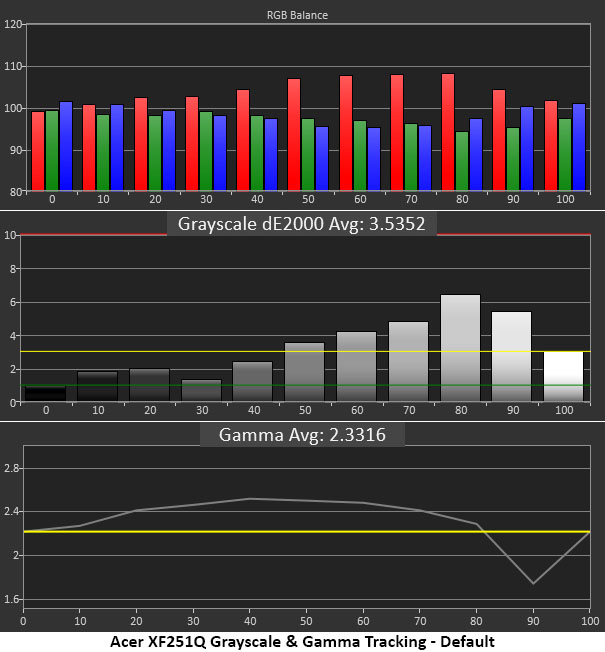
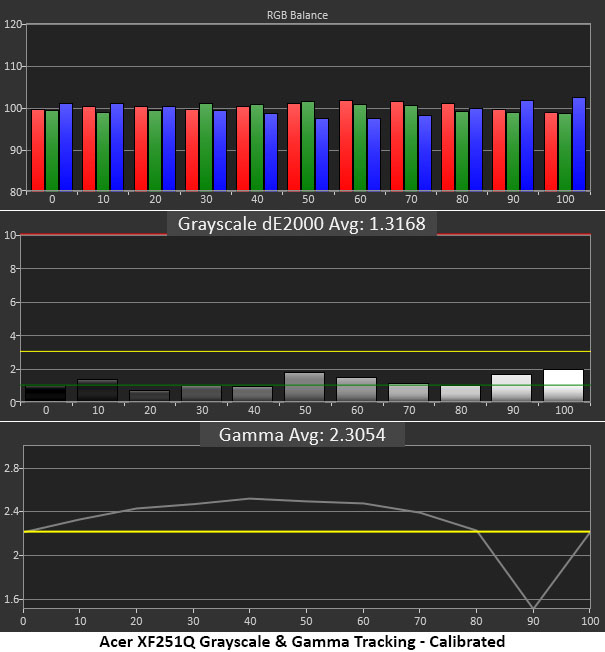
The default grayscale is a bit red, and you can see that tint in the all-important mid-tones between 50 and 90 percent brightness. That is where most content lies, so it’s important to get that right. The errors aren’t too bad with an overall average of 3.5dE.
Gamma takes a bit of a journey, mostly above the 2.2 line. This helps image depth but may obscure detail in the mid-range, like the fine shades of color on an enemy’s camouflage uniform. The dip at 90 percent usually indicates an incorrectly set contrast control, but in the XF251Q’s case, that adjustment did not help. Additional gamma presets are 1.8, far too light, and 2.6, which made the picture dark and murky. The 2.2 setting is the default and the best compromise.
Calibration helped grayscale tracking greatly, bringing all errors below the visible point. Gamma was no better though. The real-world result was that highlight details were a little less-defined than information in the mid-range and shadow areas. Depending on what you’re viewing, you may not see a problem. In productivity applications, it’s not an issue. For photo, video and gaming, it will be highly content-dependent.
Comparisons
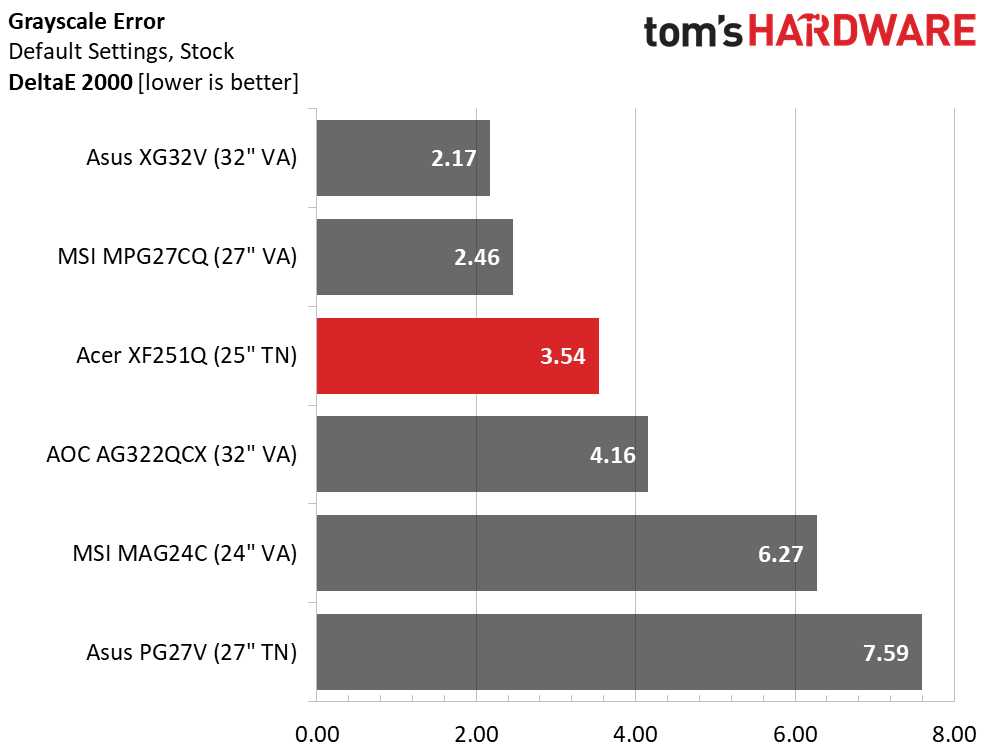
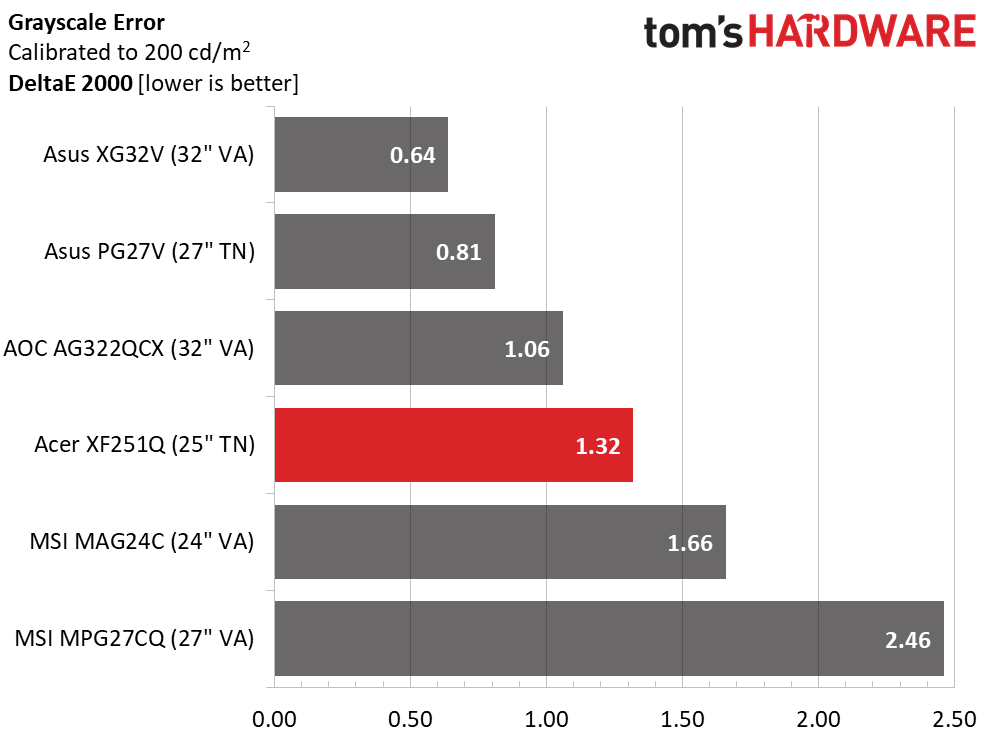
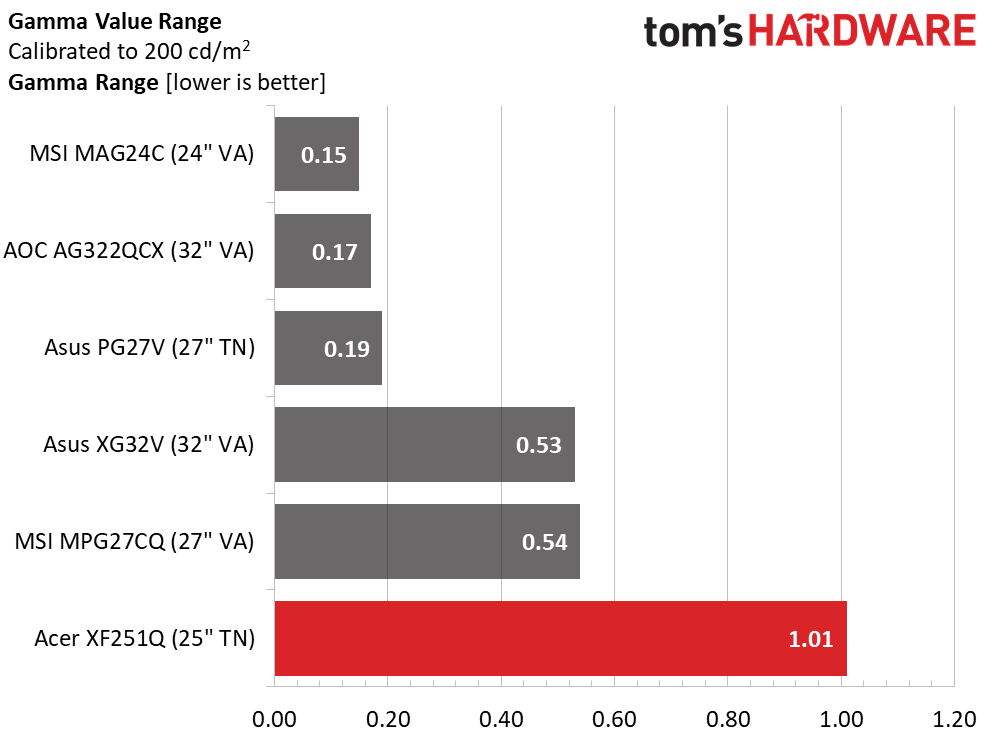
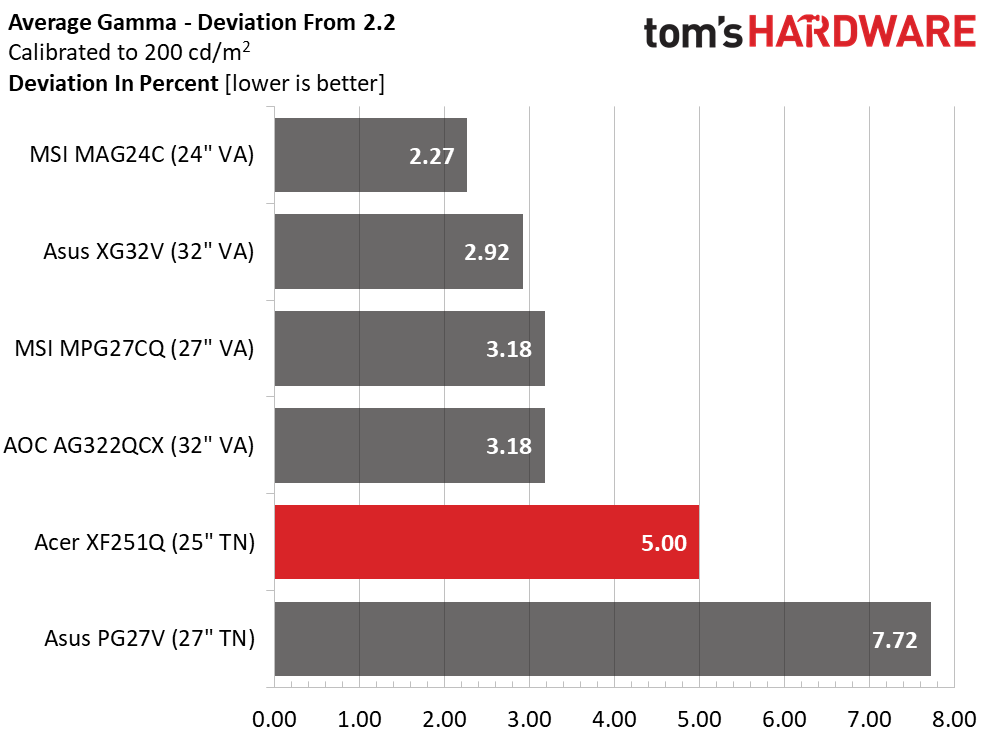
The XF251Q’s grayscale error is just 3.54dE by default, not bad for any gaming monitor. Unless you buy a premium display with a factory calibration, it doesn’t get much better for out-of-box accuracy. Our calibration made a significant improvement to 1.32dE, low enough to keep the Acer mid-pack in our comparison group. This is respectable performance.
Gamma tracking is the XF251Q’s weak point. The trace arcs above the 2.2 line until 90 percent, where it dips quite a bit. Most content looked fine, but brighter details, such as the light glinting off a distant object, were obscured at times. A five percent deviation and 1.01 range of values makes it below-average in this category. The impact on image quality was minimal, however, and we can excuse this flaw given the monitor’s budget price tag.
Get Tom's Hardware's best news and in-depth reviews, straight to your inbox.
Color Gamut Accuracy
For details on our color gamut testing and volume calculations, click here.
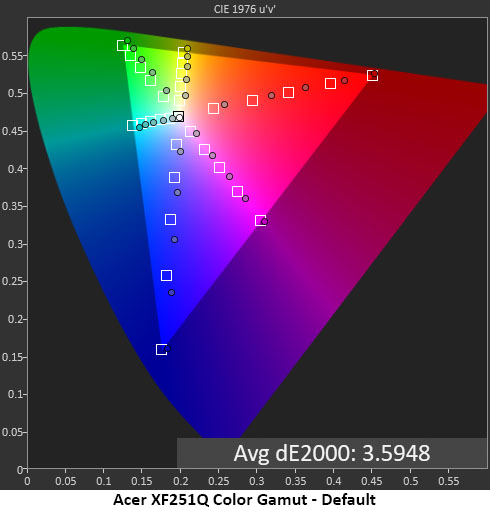
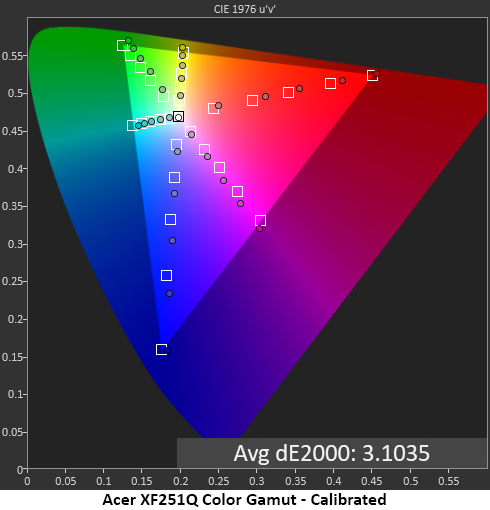
The XF251Q nailed the sRGB spec at the gamut’s outer points. Aside from slight hue errors in green and cyan, this monitor showed color accuracy equal to many more expensive screens. The gamma error mentioned above affects the inner saturations to the positive. Since they are a bit over, color looked more vivid and saturated, and a few details were a bit harder to see. Ideally, every point would be on-target or in contact with the bounding box, which represents 1dE.
Calibration has the subtle effect of pulling all saturation targets inwards, which is a good thing. The average error dropped to 3.10dE after calibration. We can live with the slight oversaturation, since it has a positive effect on gaming, photo and video presentation. This is excellent performance at the XF251Q’s price point.
Comparisons
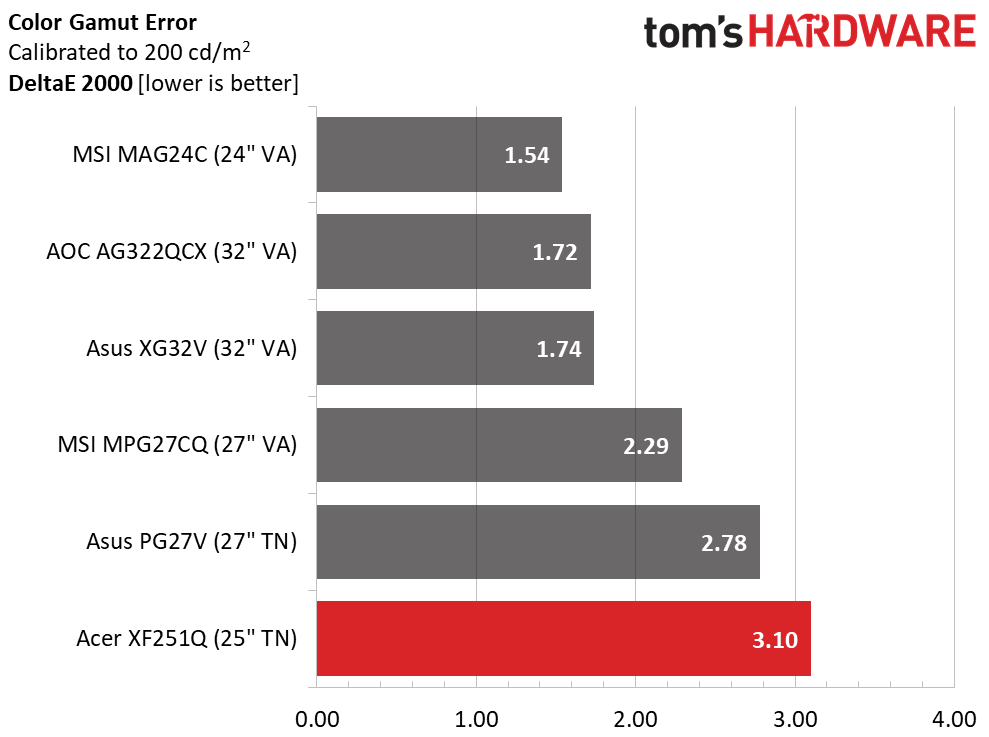
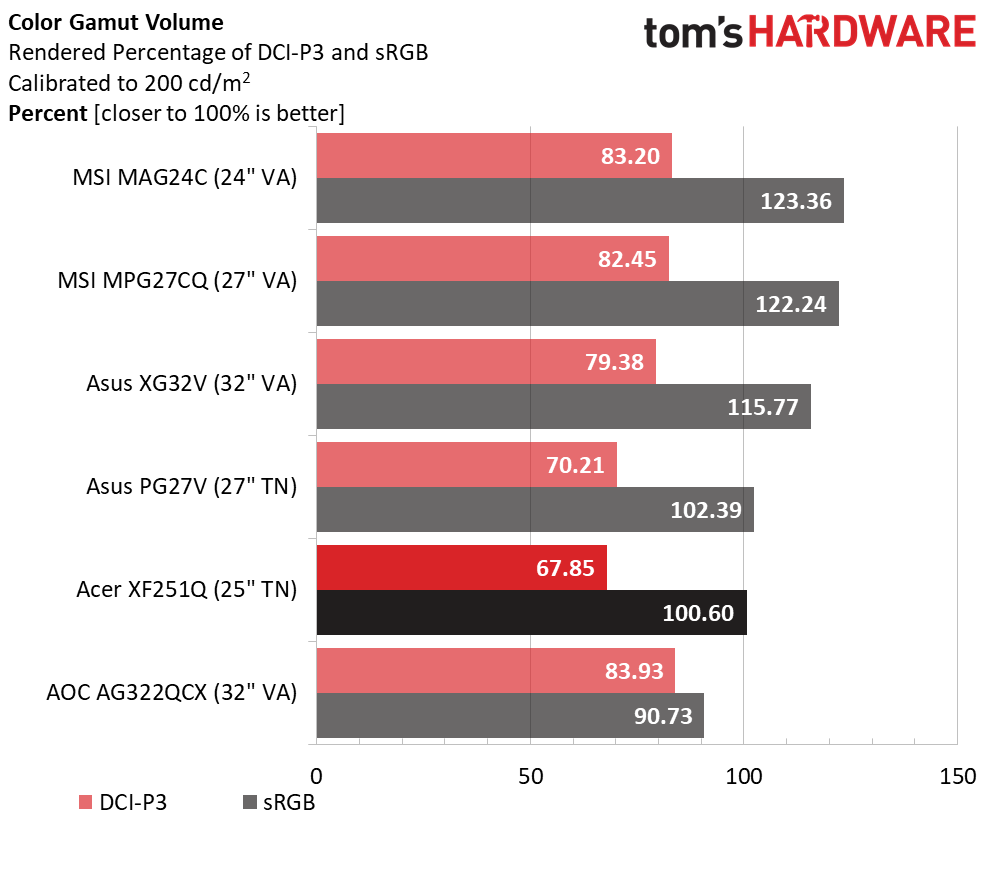
Though the XF251Q ranks at the bottom of the comparison group in this category, 3.10dE is a respectable color accuracy result. A tendency toward oversaturation, rather than the reverse, is a good thing. We’d rather see errors lead to more vivid color than errors that lead to a washed-out, chalky image. This monitor looks every bit as good as more expensive IPS displays. Only VA will offer greater image depth, and that technology’s color accuracy isn’t significantly better.
Since DCI-P3 color is becoming more important as new displays add HDR and Ultra HD specs to their feature lists, we’re using that spec (instead of Adobe RGB) for comparing gaming and general use monitors. The XF251Q doesn’t advertise extended color, and we found it hit sRGB volume on the nose at 100.6 percent.
It’s interesting to see the two MSI monitors on top of the gamut volume chart. Both advertise large gamuts, which can look great with some content but are ultimately inaccurate for critical viewing. It’s more important to have the right amount of color; more is not necessarily better.
MORE: Best Gaming Monitors
MORE: How We Test Monitors
MORE: All Monitor Content
Current page: Grayscale, Gamma & Color
Prev Page Brightness & Contrast Next Page Viewing Angles, Uniformity, Response & Lag
Christian Eberle is a Contributing Editor for Tom's Hardware US. He's a veteran reviewer of A/V equipment, specializing in monitors. Christian began his obsession with tech when he built his first PC in 1991, a 286 running DOS 3.0 at a blazing 12MHz. In 2006, he undertook training from the Imaging Science Foundation in video calibration and testing and thus started a passion for precise imaging that persists to this day. He is also a professional musician with a degree from the New England Conservatory as a classical bassoonist which he used to good effect as a performer with the West Point Army Band from 1987 to 2013. He enjoys watching movies and listening to high-end audio in his custom-built home theater and can be seen riding trails near his home on a race-ready ICE VTX recumbent trike. Christian enjoys the endless summer in Florida where he lives with his wife and Chihuahua and plays with orchestras around the state.
-
Rakanyshu 6 or 8 years ago i bought a couple 24 inches screens similar to this thing for 100 each, is ridiculous that after so much time the only thing that changes is price... i mean screens and ram modules are almost the same as 8 years ago only more expensive... (ddr3 to ddr4) for regular computer usage you would not notice the difference and there is almost not worth it to buy this monitor if you already have one you bought in this decade.Reply